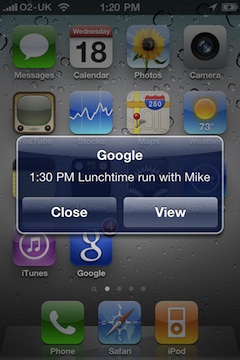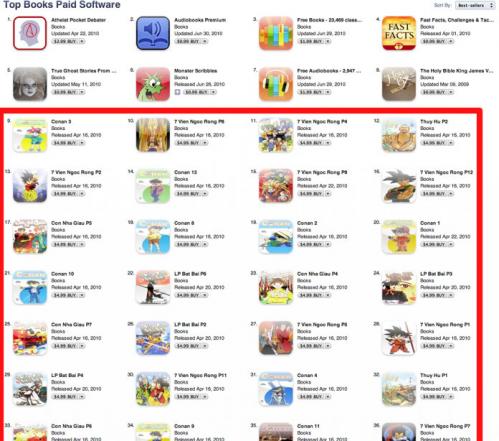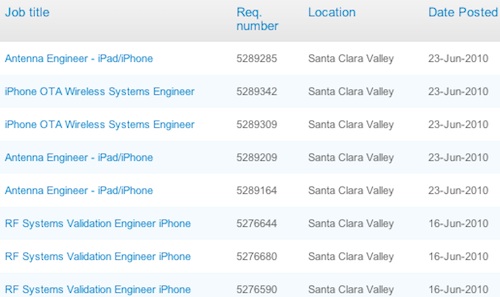 [Editor's Note: The following article is from Inside Facebook Gold, our new data and analysis membership service tracking Facebook's business and growth. In addition to monthly data updates, Inside Facebook Gold presents weekly in-depth analysis articles exploring the most critical developments impacting the future of the Facebook ecosystem. Click here to learn more.]
[Editor's Note: The following article is from Inside Facebook Gold, our new data and analysis membership service tracking Facebook's business and growth. In addition to monthly data updates, Inside Facebook Gold presents weekly in-depth analysis articles exploring the most critical developments impacting the future of the Facebook ecosystem. Click here to learn more.]
Around
100 million of Facebook’s more than 400 million users access the service through a mobile device every month. Even though that’s a fraction of the estimated four billion mobile phone subscribers in the world, it’s a much bigger number than most people realize, and amounts to a massive global mobile operation.
However, unlike other services attempting to create a pure-play mobile social networking service, Facebook’s goal is to be much more than a social network on your phone. It is competing with a wide range of leading technology companies in trying to be the main way that you consume and share information, which is something Google and many other companies are also focused on doing.
Will users five years from now use Facebook to find nearby locations, for example, or Google, or Yelp or Bing, or something else? What app will they use to see which businesses their friends frequent, or find the location of an event they’re on the way to attend? How will they share photos? Think about the main use cases for mobile and Facebook is already in some way trying to meet them on the web.
Google’s strategy, most notably, has been to build mobile services that complement its search and advertising business, from mobile ads to maps to Gmail, and to promote everything through its Android mobile-focused operating system. Yahoo is busy providing its own mobile apps, as are other internet media companies. Apple, Microsoft and other platform providers distribute their own apps, too.
Facebook, instead, is trying to do anything it can to extend its real-world social graph and simple communication features using the mobile web and basically every mobile operating system. Whether or not that turns out to be what most mobile users prefer, its positioning in the mobile market is unique. As it has on the web, it hopes that it can be a new and valuable “social operating system” that co-exists with multiple platforms, and increases the reach and relevancy of its advertising services, growing other revenue streams as a result.
As with the launch of basic applications like Photos and Events, and its developer platform, years ago, you can see Facebook looking at key types of apps and services that it can provide for mobile users. Location, as a concept, is widely available as a key feature on a range of location-based check-in games like Foursquare, Gowalla, Loopt and Booyah’s My Town, not to mention Google’s Latitude. But Facebook has been working on providing location-based services for a long time. At this point the company appears likely to release some functionality as a new part of its platform — likely a way for third-party applications to easily share location information back and forth with Facebook’s service.
The examples of Photos and Events are instructive for how Facebook hopes to approach mobile features like location. Other photo-sharing and events-planning sites became popular before Facebook existed, for example, but by making apps for photos and events itself, Facebook has become the market leader in these areas by tying those apps to its social graph and giving them special access to users.
How Facebook is Going After Mobile
Facebook has been available in various mobile forms for a long time — but the company has steadily come out with more ways to access the service via mobile platforms over the years since the site first launched in 2004.
In 2006, Facebook launched a mobile site, at m.facebook.com, that simplifies the web site interface so it will load quickly on a variety of devices’ web browsers and data connection speeds. The company has been experimenting with ways of getting itself on to devices, including ill-fated ones from earlier this decade
like the Helio.
After the iPhone first launched in 2007, it developed a mobile site designed for its interface. Then it launched a native iPhone app that provided integration with more features, like photos. It also
began working with other partners, like Blackberry maker Research in Motion.
In the last couple of years, Facebook has expanded to a wide variety of other devices. As of today, those include INQ, HTC, LG Electronics, Motorola, Palm, RIM, Samsung, Sony Ericsson, T-Mobile’s Sidekick, and phones powered by Microsoft’s Windows Mobile operating system.
Facebook either works with the hardware manufacturer to develop a standard application to run on all devices, as it did with Palm, or builds its own, like on the iPhone. In other cases, the manufacturer will create their own version of the app for a specific device, like Nokia has with its N97.
Native apps tend to work better than the mobile web services, because they are less reliant on a constant data connection for things like loading parts of the site interface. They provide a better user experience for people on Facebook, so the company has done whatever it can to take itself to those users. In perhaps the most prominent example of this, Facebook uses technology from mobile download store GetJar on m.facebook.com to detect when a native app is available for the user on the mobile site. It then directs the user to download the appropriate app.
Facebook has continued expanding its web-based mobile services even more, however. One example is a version designed for the iPod Touch, at touch.facebook.com. Another is a new site it has planned, at zero.facebook.com. It illustrates the other key part of Facebook’s mobile efforts: Relationships with carriers.
Facebook has actively worked with more than 180 carriers in 32 countries to form various distribution partnerships. Many of these carriers are in parts of the world where mobile devices are far more common than computers. Facebook has already been providing simplified text messaging services, for example, where users can send and receive status updates and take other actions on Facebook via text. You can see all sorts of carrier implementations around the world today. Telcel, a leading Latin American carrier, has a mobile
site and messaging service designed specifically for helping users upload photos, status updates and other content they create to Facebook and other sites from their phones.
Zero is a text-only version of Facebook that carriers can provide users for free. If users decide they want the multimedia version of Facebook for doing things like sharing photos but don’t yet have the necessary data plan, Zero lets carriers include a billing prompt so users can pay for the data service and get the full version.
Facebook’s mobile growth has stayed at around 25% of its overall user base, based on numbers that Facebook has released over the years. Yet some differences are emerging. Some 70% of the service’s 400 million users are outside the US, most in mobile-heavy Europe and Asia, but also across Latin American and Africa. Most users in Indonesia are accessing Facebook on their phones, for example. In the United Kingdom, Facebook was the
most popular site for mobile Internet users last December, according to GSMA Mobile Media Metrics; more than a quarter of all cell phone users connect to Facebook with their phones each month in the country and almost half of all mobile Internet minutes were spent on the service.
Today, more people in the US and many other industrialized countries still connect to Facebook on computers than mobile phones. In the short-term, developers and marketers have needed to build with the web experience in mind. But now they’re needing to think about new features that mobile is making possible — like location, which can provide new forms of applications and targeted advertising.
Like Facebook has adapted itself to the massive growth in mobile web usage around the world, so to will companies and other organizations that rely on it to reach users.
Measuring Facebook’s Mobile Traffic
While the company irregularly updates its internal numbers for mobile, we’re able to track some apps and services via our AppData measurement service. Here’s a closer look at some examples.
Facebook’s iPhone app is by far the most popular Facebook mobile app. It has 31.4 million monthly active users as of today, 10 percent of whom have joined in the past month — while the app has been growing steadily, its numbers are looking particularly good now. And not just in terms of MAU. It has 16.0 million daily active users, so more than 50 percent of all users access the app every day. Note that this traffic includes both the iPhone and the iPod Touch, as both use the same application, although it doesn’t include touch.facebook.com.
 The Blackberry app
The Blackberry app is also one of the most popular. It has fewer MAU than the iPhone app, at 15.9 million, 1 million of whom joined in the last month. But it also has relatively higher engagement, with 9.65 million people using it every day, or 61% of all MAU.

Finally, we also
track the m.facebook.com site, as it’s officially listed as an app on the platform. Even though Facebook is using this site to direct people to download native apps for their devices, the site continues to grow — by 1.7 million users this past month. It now has 19.8 million MAU and 7.76 million DAU; like the two apps above, it brings back an abnormally large amount of users every day, or 39% of them.

Expect Facebook to Focus More on Mobile
Facebook has made a big organizational commitment to mobile in the past few years, and we expect it to put even more resources towards mobile in the future. Key parts of its strategy are already visible. The company will continue to try to cut deals with carriers around the world, as it has already, to get itself as integrated as possible into every device available. While the company has only spoken briefly about Zero, the feature is part of Facebook’s effort to adapt itself to tough computing environments (another example is its simplified web site, Lite). Zero could play a major part in helping Facebook make deals with carriers who are not using Facebook, or doing so minimally, as it promises to help them sell more data services. Finally, we expect Facebook to continue building apps for smartphones and other high-end devices.
Other innovations, like location, look promising — but Facebook needs to continue making its mobile service popular for those to be valuable, so doing so will be its main focus.
This article is from Inside Facebook Gold, our new data and analysis membership service tracking Facebook’s business and growth. In addition to monthly data updates, Inside Facebook Gold presents weekly in-depth analysis articles exploring the most critical developments impacting the future of the Facebook ecosystem. Click here to learn more.
Marco Spoerrle
MarcoSpoerrle.com










 Following a string of other expansions this year, Facebook has moved to set up its latest outpost in Singapore. The company has registered its name, rented offices and listed a half-dozen positions with the intention of of opening the office this summer, according to
Following a string of other expansions this year, Facebook has moved to set up its latest outpost in Singapore. The company has registered its name, rented offices and listed a half-dozen positions with the intention of of opening the office this summer, according to 




.jpg)